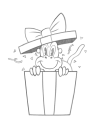Portrait Drawing Fundamentals
The Loomis Method
The Features
Full Drawing Demos
How to draw the structure of the eye and it's anatomy.
Newest
@abhi_
1mo
Austin thompson
4mo
i love you stan
Rich Lowenberg
5mo
The video says the eyes should be placed in the vertical center of the head if the person is looking straight, but doesn't this contradict the Loomis method where the center line is the brow line?
@eliasz12
5mo
The best explanation ever I have seen
faye zhang
7mo
I spy 🔍
faye zhang
7mo
Lenserd martell
1yr
thank you grugrugru!
@mogumogu
1yr
That's amazing!
carla toms
1yr
holy moley!
•
1yr
Wow!
Julia Pe
1yr
I still feel my hand and my lines stiff, it's been a month since I started practicing drawing again. Unfortunately the hours I can devote are few and of poor quality, usually after work. But what hurts me most is the comparison with the past. My last drawings are dated 2016 I still remember how much I enjoyed it. Now I'll just have to keep practicing until my arm finally relaxes, until I start to relax myself and start enjoying it. There is no better feeling than the pencil flowing effortlessly across the paper..
Jack Mills
1yr
@grugrugru
2yr
Lenserd martell
1yr
Can I use your drawing material?
@grugrugru
2yr
Almost halfway my goal for this lesson, I have been mostly focusing on the planes of the eye for now. If anyone has any tips how to approach this lesson or critique/advice let me know :)
@ern1s
2yr
hi there, need some help on this one. I figure there's no point to start shading if the structure of the drawing is off, so thats what I try to figure out, but boy it's difficult. Could anyone point out where to pay more attention please
*Reworking Profile* From The Game.
2yr
17/9/2023
And some offered new opportunities.
*Reworking Profile* From The Game.
2yr
17/9/2023
some made me wanted to rip the pages out from my sketchbook.
*Reworking Profile* From The Game.
2yr
17/9/2023
some were of course better than others.
*Reworking Profile* From The Game.
2yr
17/9/2023
last week of doing eyes before moving onto the next facial feature.
*Reworking Profile* From The Game.
2yr
10/9/2023
and 1 more.
*Reworking Profile* From The Game.
2yr
10/9/2023
and more
*Reworking Profile* From The Game.
2yr
10/9/2023
Cam’s draw as often since school’s a bum. So take these for 3rd week of eyes.
*Reworking Profile* From The Game.
2yr
3/9/2023
ok. E y e s.
•
2yr
Awesome job! You've had a lot of progress and you're getting really close. Just two details that can help you out:
You added the eyelids in good positions with correct proportions to the eyeball, now it's just the matter of adding some thickness to them so they appear three-dimensional. In the 2nd page of drawings, you can already see the implied form as the lids wrap around the eyeball, so you can further define this visible area of thickness. Sometimes it will not fully be visible, depending on the angle we're looking at, but in this case you can fully the bottom lid and the left area of the top lid. I've added a sketch below to hopefully make it clearer.
The 2nd thing would just be the simplification of eyelashes. Instead of drawing individual lines, try looking at the bigger groups and see where you can simplify them into shapes to draw. It can help to think abstractly, so think about them just as the 2D shapes you observe instead of thinking of them as individual hairs to copy.
Keep up the good work! Let me know if you have any questions :)
*Reworking Profile* From The Game.
2yr
3/9/2023
good stuff.
Give a gift
Give a gift card for art students to use on anything in the Proko store.
Or gift this course:

About instructor
Founder of Proko, artist and teacher of drawing, painting, and anatomy. I try to make my lessons fun and ultra packed with information.




















